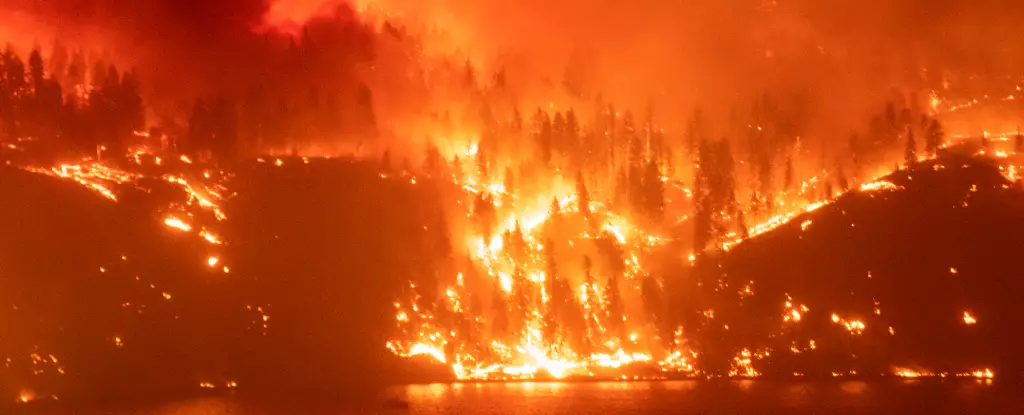Los Angeles is not just a solitary battleground against raging fires. In recent years, the flames have engulfed various regions across the globe—from the expansive landscapes of Colorado to the breathtaking terrains of Maui, as well as other continents like Australia, Europe, and even Canada. The increasing frequency and intensity of wildfires raise questions about the narratives we construct around climate change and environmental degradation. Are we witnessing an isolated event in a linear timeline of natural disasters, or are we trapped in a cyclical pattern where our past decisions are haunting our present?
Historically speaking, humanity’s relationship with fire extends back eons, and this enduring connection is indeed notable. Fire has shaped not just the ecology but also the very fabric of human civilization. As a historian of fire, I recognize that we possess both narratives that frame this relationship and historical analogs to illuminate our current plight.
The Historical Context of Fire Management
Humanity and fire have evolved together since the close of the last ice age, approximately 11,500 years ago. This period marked the beginning of significant alterations in landscapes due to fire’s dual role as a natural element and a tool wielded by humans. Researchers suggest that significant population declines in the Americas, due to colonial impacts, enabled forests to reclaim land, inadvertently contributing to the Little Ice Age between the 16th and 19th centuries. This demonstrates that while fire has long been integral to landscape dynamics, human influences have escalated its intensity in modern times, giving rise to an unprecedented ecological crisis.
The dynamics between human-driven fire practices and natural ecological processes showcase the complexity of our interactions with fire. The boundaries that once regulated fire’s ecological role have eroded dramatically in recent years, particularly through our reliance on fossil fuels. The combustion of fossil fuels has unleashed an uncontrollable force of fire that can erupt anytime, anywhere, significantly warming our planet and exacerbating the conditions for wildfires.
Modernity has ushered in what can be described as the “pyric transition,” where the combination of industry and urban development leads to new, perilous conditions for fire management. Industrial capabilities have fundamentally altered the ways we combat fire. While the intention is to control fires, we have often resorted to mechanized solutions—using pumps, engines, and aircraft—that function as counter-forces to the natural fire phenomenon. This approach inadvertently fuels a competition between the two forms of combustion: the destructive wildfires in living landscapes and the industrial fires produced by urbanization.
Land use practices have also undergone a seismic shift, contributing to the worsening fire environments we face today. The suppression of fire as part of forest management practices, championed since the mid-20th century, has often led to unintentional consequences. By removing the natural fire cycles, landscapes became overgrown with combustibles, setting the stage for larger, more uncontrollable infernos.
Climate Change and the Convergence of Fire Practices
It’s crucial to understand that neither climate change nor land use can be viewed in isolation. They are interrelated parts of a larger narrative—the transition to our fossil-fuel-based civilization. Just as hurricanes thrive in warm oceans, megafires have become a byproduct of modernity. This reality has become alarmingly evident in the United States, where industrial fire practices have fostered unprecedented scaling of wildfires.
When one considers the fire history against the backdrop of 19th and early 20th-century timber exploitation, it’s clear that human activity has fundamentally altered ecological dynamics. The federal policies aimed at curbing wildfires often oversimplified these interactions by simply viewing fire as a nuisance rather than an integral component of ecological balance. Fire suppression has become a misguided index of ecological health, sparking a problematic cycle of disaster.
As we widen our perspective, we may find ourselves entering an epoch described as the “Pyrocene,” akin to the ice ages of the Pleistocene. In this emerging reality, fire assumes a transformative role—shaping landscapes, influencing species migrations, and posing dire consequences for ecosystems and human habitats alike. With these burning upheavals, we are observing drastic alterations in biogeographical distributions, watershed health, and air quality, which will collectively contribute to a new world marked by fire’s presence.
The myth that humanity can tame fire through modern technology is crumbling under its own weight. Instead, we have reached a point where the balance of power between humanity and the ecological world is tipping dangerously towards chaos. As California and other burning states demonstrate, the next chapter in our long narrative with fire may be fraught with displacement, extinction, and new ecological realities we are only beginning to comprehend.
In reflection, to think of fire merely as a destructive force overlooks its intricate role in shaping our planet’s future. Understanding this relationship will be crucial as we navigate the trials of the Pyrocene era, challenging our preconceptions and striving for a more harmonious coexistence with this elemental phenomenon. Every action we take resonates within this delicate balance, and it’s time we recognize fire not just as a force to control, but as a vital thread in the tapestry of life on Earth.

